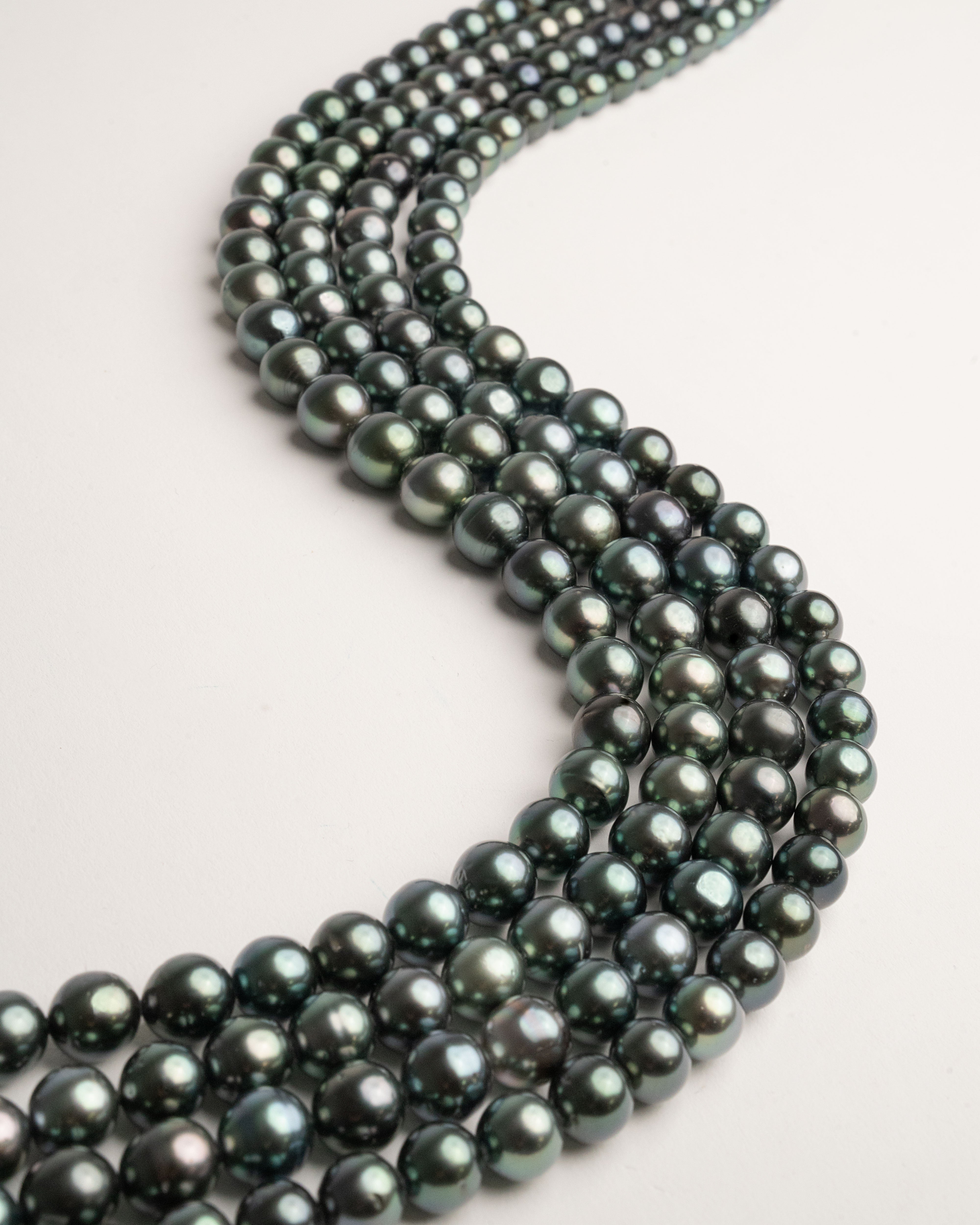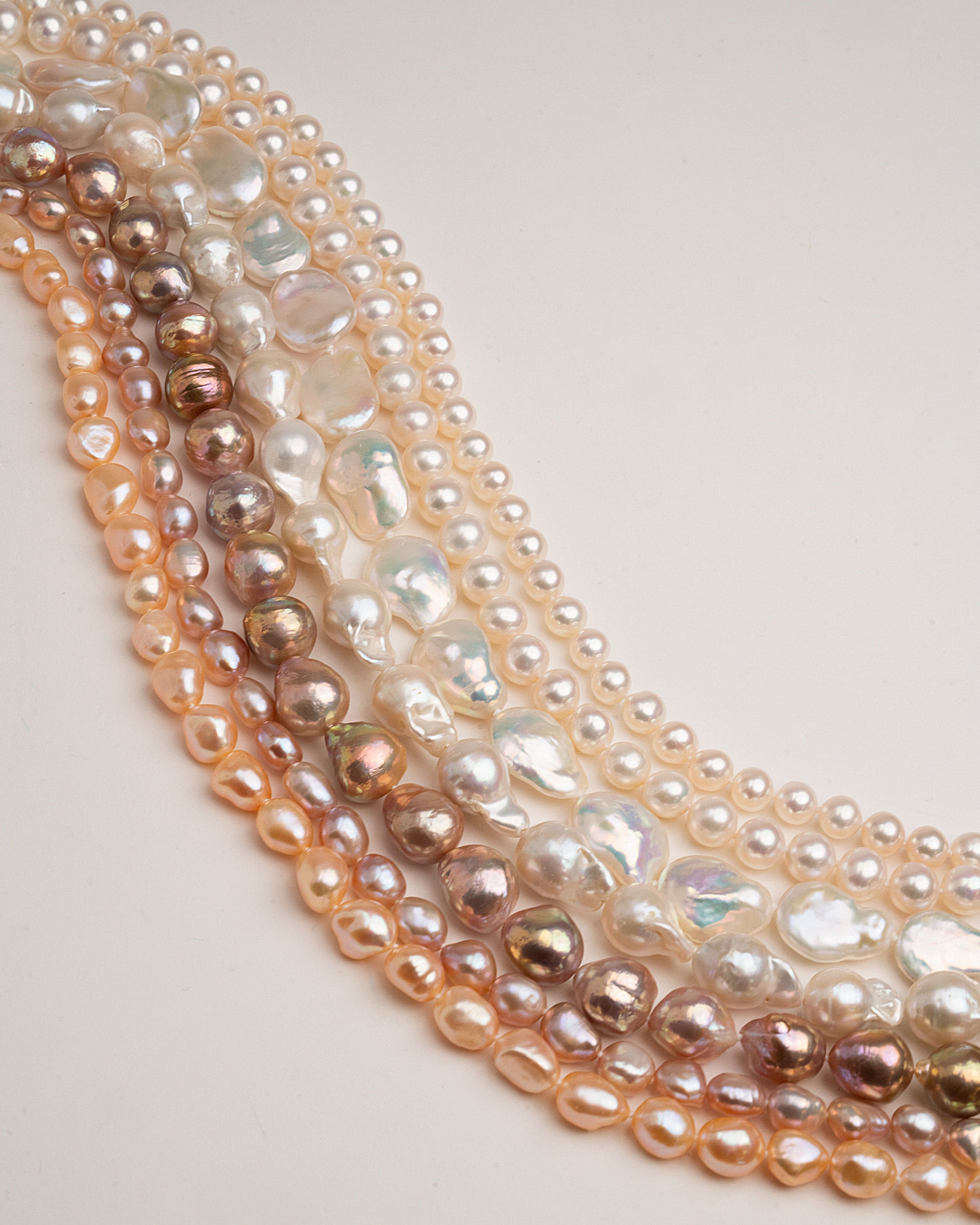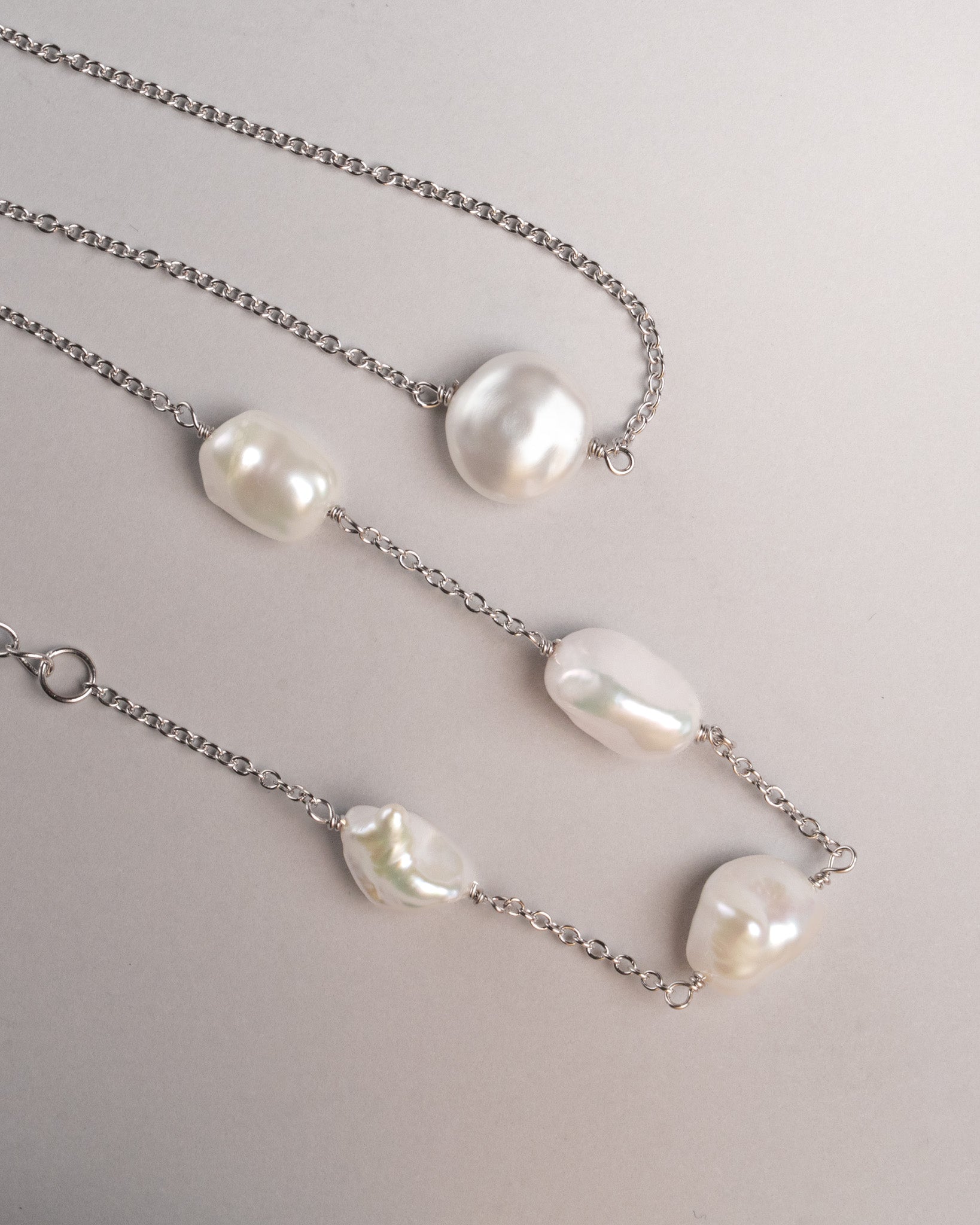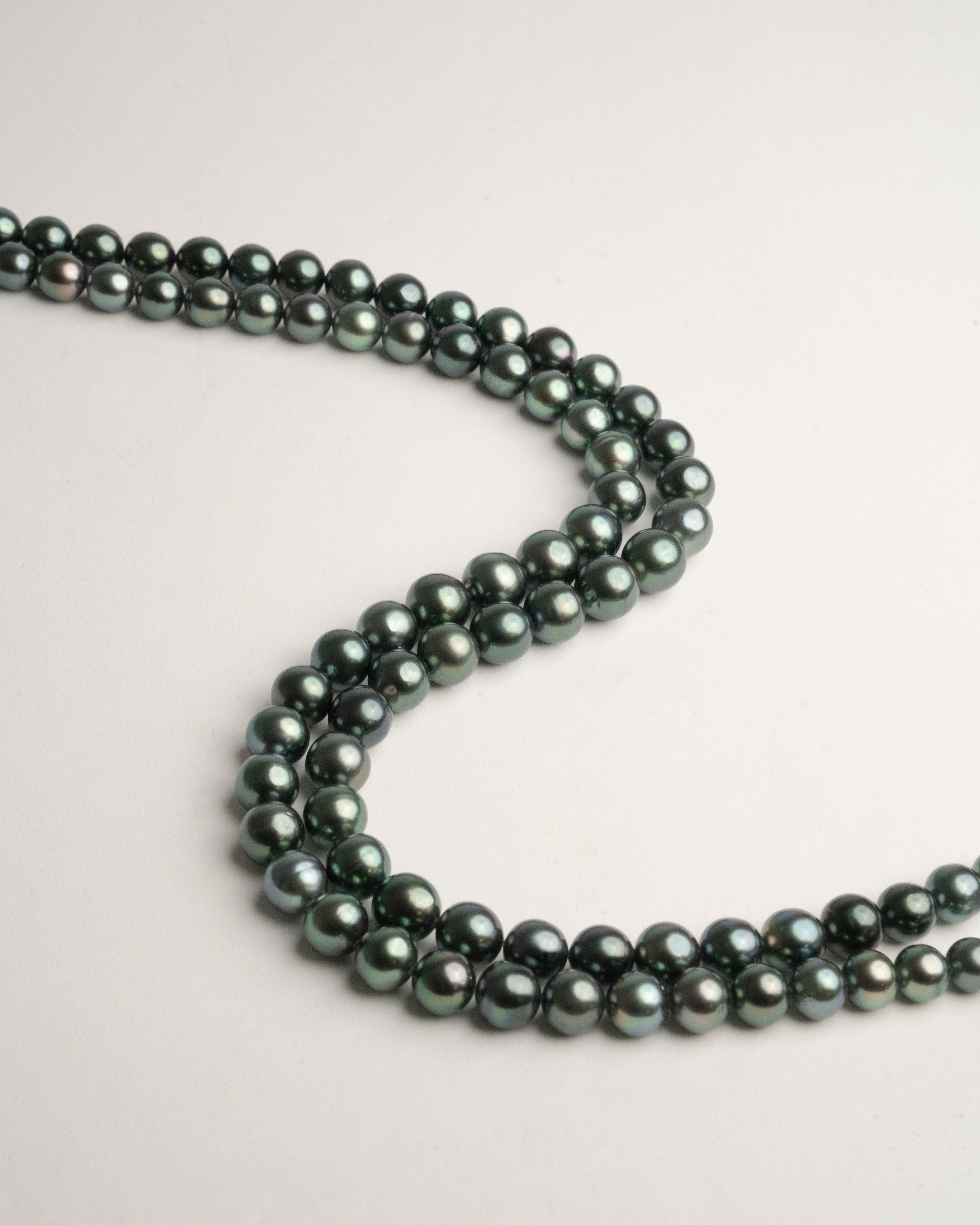Freshwater Pearls: Discover Their Beauty, Quality, and Value
The pearls of Freshwater, those gems that are born in the mussels Freshwater, have gradually become the most popular and widely used pearls in the world of jewelry. Their versatility, with a wide range of colors, shapes, and sizes, along with its relatively affordable price for the quality and the beauty of the pearls that have been produced in recent decades have catapulted them to the top of popularity.
But don't let their "affordability" fool you. Today's Freshwater pearls are far from the simple contenders that, decades ago, were nowhere near the quality offered by their saltwater sisters. salt water, are a gem in their own right, with a quality that can surprise even the most experienced. In this article, we invite you to discover the fascinating world of Freshwater pearls, from their origin to the latest trends, and to understand why they are an ideal option for those seeking quality jewelry without giving up their budget. They are, by far, the best-selling pearls today.

Strands of white, lavender, and purple cultured Freshwater pearls
A key tip: Jewelry stores or brands specializing in pearls, like ours, usually specify the type of cultured pearl (Freshwater, Akoya, South Sea o Tahiti). If you only see the label 'cultured pearls', they are almost certainly Freshwater.
What are Freshwater pearls?
Unlike their saltwater sisters, which grow in oysters in the sea, Freshwater pearls are cultivated in mussels in ponds and lakes. But don't think of the small mussel you're used to seeing in restaurants, we're talking about mussels that can exceed the 20 cm. These mollusks, mainly the triangular mussel and the mussel leisure, they are responsible for creating these iridescent wonders.
Image of a Triangular Mussel or Hyriopsis cumingi
How valuable are cultured Freshwater pearls?
While it is true that Freshwater pearls are usually more affordable than those of saltwater, their value can vary greatly. On the market, there are everything from low-quality Freshwater pearls, with very low prices, to true marvels that rival in beauty and price the most exclusive saltwater pearls.
What makes the price difference between some Freshwater pearls and others? Quality. Factors such as luster, shape, size, color, and the surface of the pearl influence its value. (You can learn more about the 7 value factors of pearls here). And this is where experience and knowledge come into play. At SY Perlas, we specialize in high-quality Freshwater pearls, carefully selected to ensure their luster, perfection, and durability. So, if you thought that Freshwater pearls were low-value, poor-quality pearls, that is not the case. Today, we can find Freshwater pearl necklaces that exceed six figures.
Why are they usually cheaper than saltwater ones?
The price difference between Freshwater pearls and saltwater pearls is mainly due to two factors:
-
Cultivation ease: The cultivation of Freshwater pearls is carried out in a much more controlled environment than the ocean (lakes and ponds), which makes it easier to care for the mussels and reduces risks.
-
Higher production: Freshwater mussels can produce a greater number of pearls at once than saltwater oysters, which increases the supply and therefore reduces the price.
A Rainbow of Colors, Sizes, and Shapes
Forget about monotony, Freshwater pearls are synonymous with diversity. From classic white to shades lavender, rose, salmon and even an intense purple, the color palette is a delight for the eyes. And if you're looking for something even more special, the pearls multicolored with their metallic shine, they will leave you breathless. Freshwater pearl necklaces in various colors and shapes
Freshwater pearl necklaces in various colors and shapes
When it comes to shapes, the variety is just as impressive. While perfectly round pearls are the most coveted, Freshwater pearls also come in baroque shapes, with irregular contours full of personality, allowing for the creation of unique and original jewelry. As for size, there are pearls ranging from tiny ones barely a millimeter in diameter to specimens exceeding 20 mm, offering options for every taste.
The Cultivation of the Pearl: From the Mussel to Your Jewelry Box
Freshwater pearls are cultivated in Freshwater mussels, mainly in China. Cultivating Freshwater pearls is an art that requires patience and precision. It all begins with a small incision in the mussel's mantle, where a nucleus is inserted, which can be a piece of tissue from another mussel or a small bead. The mussel, with its implanted nucleus, returns to the water for 2 years, time during which the magic happens: the mother-of-pearl is deposited layer by layer around the nucleus, giving rise to the pearl.
Here we must clarify that mussels do not suffer any kind of pain during this process, as they lack a brain or nervous system. In this respect, they are more similar to a plant than to an animal. Furthermore, once the pearl cultivation process is completed, they are often returned to the water.
A Millennial Legacy with a Look to the Future
The history of Freshwater pearls dates back to ancient China, where these gems were already being cultivated centuries ago. Over time, cultivation techniques have been perfected, resulting in pearls of a exceptional quality. An example of this are Edison Freshwater pearls, cultivated with a larger nucleus that allows for bigger pearls, competing directly with South Sea pearls. If you want to know more about these fascinating pearls, we invite you to read our article dedicated to them. Edison Pearls.
16 mm Edison Cultured Freshwater Pearl Necklace
Conclusions and Tips from Our Expert
Ultimately, Freshwater pearls are an ideal option for those seeking elegant, versatile, and high-quality jewelry without having to invest a much higher amount.
We always recommend investing in good quality Freshwater pearls rather than low-quality Akoya or South Sea pearls, but don't worry, at SY Perlas we do not offer low-quality pearls of any kind.
The reason why you should opt for pearls of another type is because they are more scarce and exclusive and because they are different. But in no case better or worse. For example, if you want pearls with an incredible mirror-like shine, perfectly round and cultivated in the exotic seas of Japan, we definitely recommend the Akoya pearls.
If, on the other hand, you are looking for the most exclusive pearls you can find, large and with a deep, silky shine and a silvery white or golden color cultivated in the waters of northern Australia, Indonesia, or the Philippines, we undoubtedly recommend the pearls of South Sea.
At SY Perlas, we offer a carefully curated selection of Freshwater pearls, transformed into jewelry that will accompany you for a lifetime.
Visit our online store and discover the magic of Freshwater pearls.







